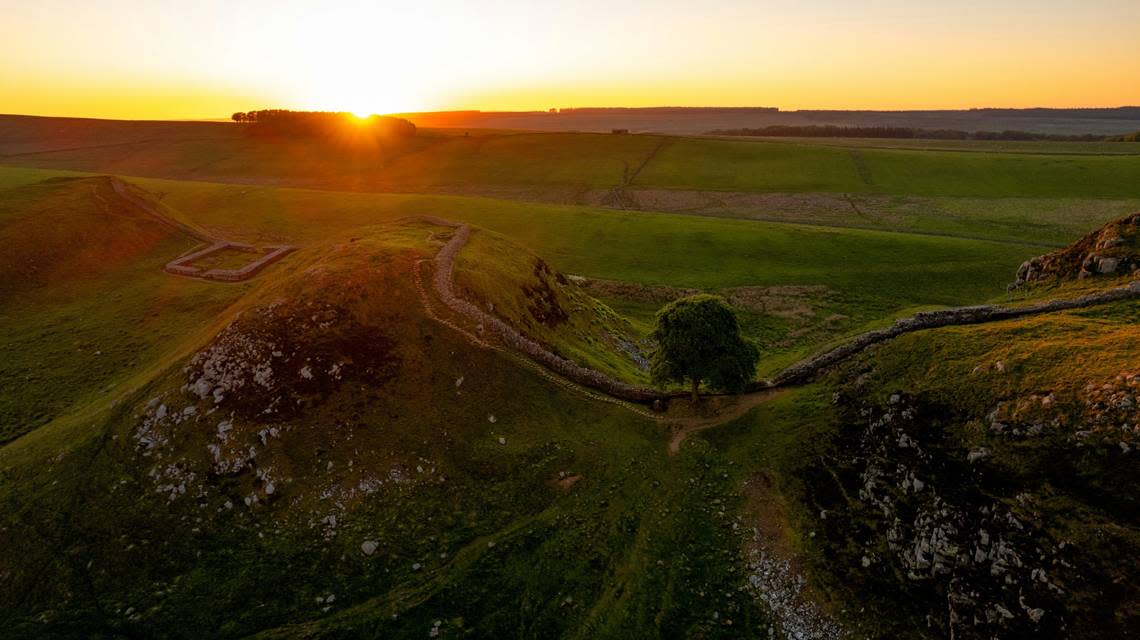Hidden ancient phallus carving discovered at Roman fort in United Kingdom — again
Since the age of the Romans, a lot has changed.
Aqueducts have been replaced with sewer systems and indoor plumbing. Gladiator battles have been replaced by the National Football League. Even the earliest medical tools, like scalpels and forceps have, thankfully, been updated in the past few millennia.
What hasn’t changed is the desire to put phallus images on the wall.
Like sixth graders left alone with a sharpie in a public school bathroom, the Romans hid drawings, carvings and impressions of male genitalia in stonework across the empire.
Nowhere is this more apparent than Hadrian’s Wall, an ancient Roman construction in the United Kingdom.
Built around the time the Romans came to Britain in 122 A.D., the wall runs 73 miles across northern Britain and served as the frontier of the Roman Empire, now a World Heritage Site, according to English Heritage.

Filled with history, the wall is also filled with carvings, drawings and iconography of penises — and researchers keep finding more.
“Phallic objects are common in the Roman world, as larger carvings in rock or smaller pendants in bone or bronze, or depicted in art,” Rob Collins, professor of frontier archaeology at Newcastle University and project manager of Hadrian’s Wall Community Archaeology Project, said in a post on X, formerly known as Twitter, in 2023. “When presented like this, the phallus has a ‘magical’ function, as a symbol that evokes protection.”
As many as 59 images of phalli have been found along the wall, Heritage Daily reports, and grouped together by their physical traits.
Now, those studying Hadrian’s Wall have found another.
Due to the benevolence of the Wall gods, I happened to visit @VindolandaTrust this morning with an @ArchaeologyNCL fieldtrip, to see the newly discovered phallus! A fine example of the splitcock type from the Collins phallus typology, and Vindolanda's ?16th stone phallus carving pic.twitter.com/5XxFhYU6Ln
— Dr Rob Collins, FSA (@duxBritanniarum) April 23, 2024
In many cases, the phalluses were a sign of good luck from soldier to soldier, according to Historic England, on the forefront of Roman expansion.
While some of the phallus imagery is rather hidden, others are a little more obvious.
A photo of a phallus protruding from the wall was shared by Historic England in 2006, and another deeper carving was shared by the organization in 2019 as part of an effort to protect and preserve the “Roman graffiti.”
In 2023, researchers discovered what they thought was a 1,800-year-old knitting tool discovered in 1992 was actually a carved, wooden phallus, McClatchy News reported.
The new discovery was made at Vindolanda, a fort along Hadrian’s Wall outside Hexham, in northern central Britain.
1,800-year-old wooden phallus found in UK may have been a Roman ‘sex toy,’ study says
‘Magical’ Roman wind chime — shaped like a phallus — unearthed in Serbia, photos show
Stone penis found in 2,000-year-old grave, photos show. It had an important purpose
Stone penis found in medieval Spanish ruins had a violent purpose, experts say
